| Origin | Vertebral bodies of T12-L1 vertebrae and adjacent intervertebral disc |
| Insertion | Iliopectineal eminence and pectineal line of the pubis (pecten pubis) |
| Action | Very weak flexion of the trunk |
| Nerve | Anterior ramus of first lumbar nerve (L1) |
| Artery | Lumbar arteries |
Location & Overview
The psoas minor is flat and relatively thin muscle located in the lumbar region of the back and extending to pubis region. It is able to provide very weak flexion of the trunk, specifically in the lumbar region. It is superficial to the psoas major muscle and the iliacus muscle (meaning it is more anterior than both of these muscles and closer to the skin’s surface). The psoas minor and major muscles are sometimes referred to collectively as the ‘psoas muscle’ [1] [2]. The psoas minor muscle is bilaterally absent (missing from both sides) for about 40% of the population. It can also be missing unilaterally (from just one side) [3].
The name of the psoas minor muscle is believed to have originated from the Ancient Greek word ‘ψόᾱ’, meaning ‘psoas’, which translates to ‘muscles of the loins’ in English.
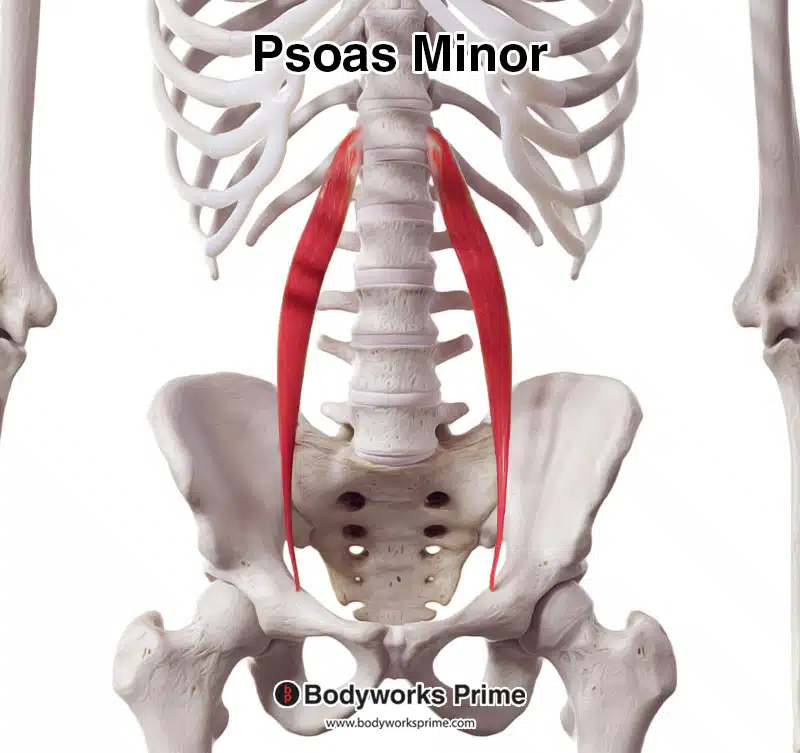
Here we can see the psoas minor muscle by itself.
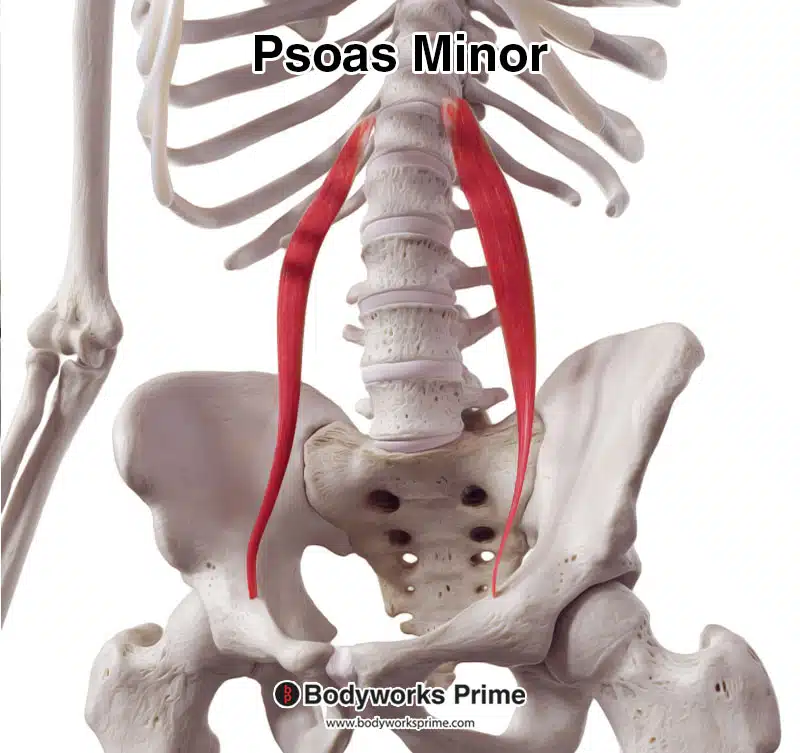
Here we can see the psoas minor from a more lateral view.
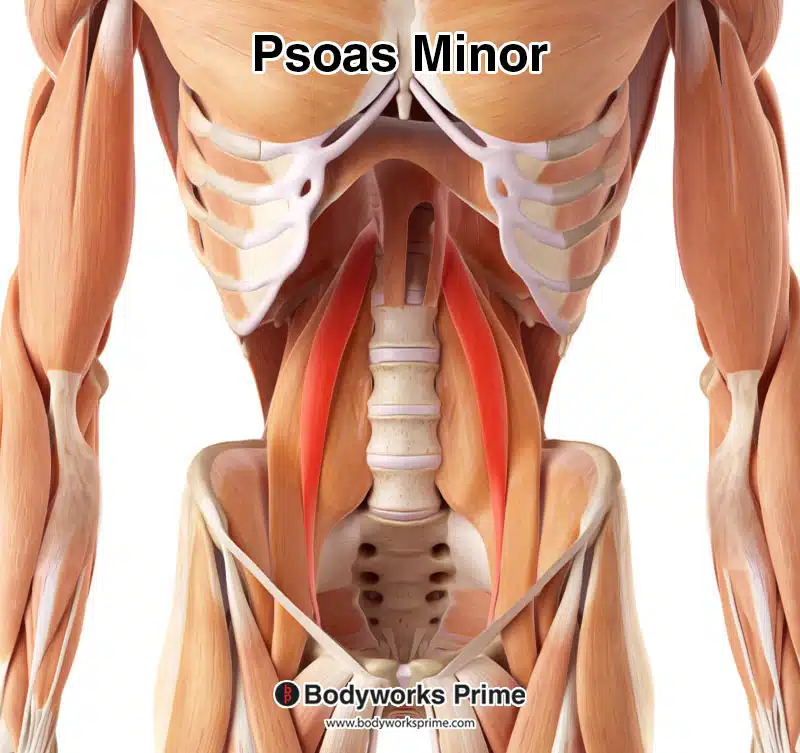
Here we can see the psoas minor highlighted in red amongst the other muscles of the pelvic and abdominal region. The psoas minor is a deep muscle, therefore superficial muscles such has the abdominal muscles have been removed from the image to revel the psoas minor. The muscle located right behind the psoas minor is the psoas major.

Here we can see the psoas minor, psoas major and iliacus muscle (collectively known as the iliopsoas muscle). You can also see the inguinal ligament and how the psoas major and iliacus pass behind it through the gap between the inguinal ligament and the pelvis.
Origin & Insertion
The psoas minor muscle originates from the last thoracic and first lumbar vertebrae (T12-L1). It also originates from the and adjacent intervertebral disc (i.e it connects to the disc between T12-L1). The psoas minor then continues in an inferior direction towards the pelvis and inserts on the iliopectineal eminence and pectineal line of the pubis (aka pectin pubis) via a long tendon [4] [5] [6]. Guerra, et al. determined that the tendon comprised 57% of the total length of the muscle [7].
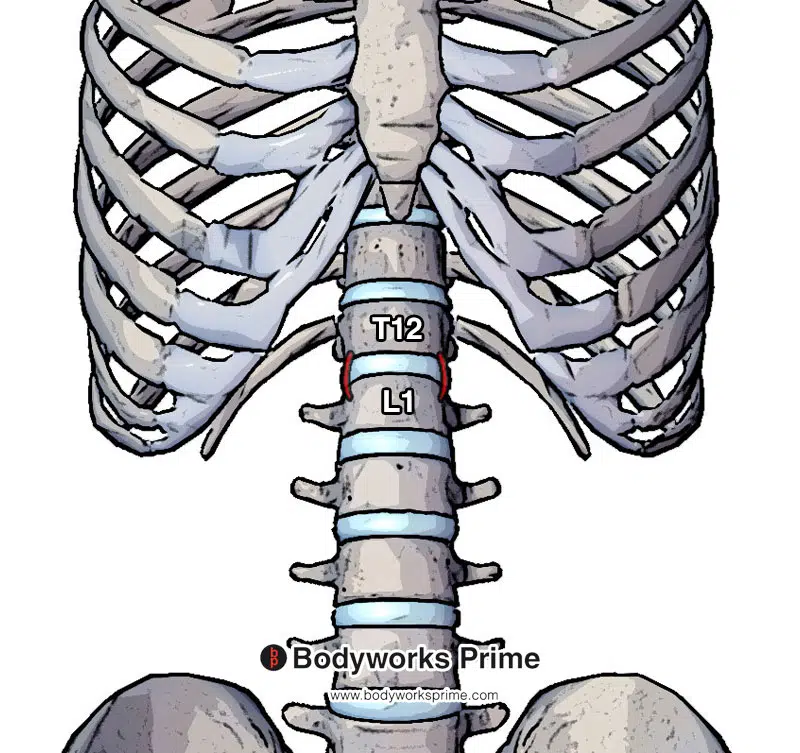
Pictured here we can see the origin of the psoas minor highlighted in red. The origin is on the vertebral bodies of T12-L1 vertebrae and adjacent intervertebral disc between them.
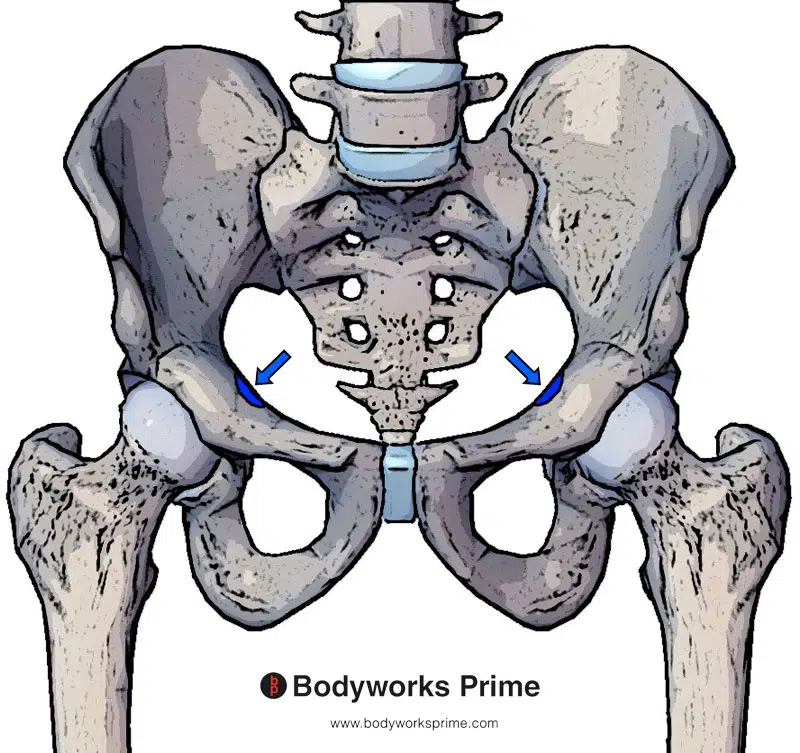
Pictured here we can see the insertion of the psoas minor highlighted in blue. This is on the iliopectineal eminence (lateral portion of the marked area) and pectineal line (medial portion of the marked area).
Actions
The psoas minor provides very weak assistance during flexion of the trunk. The absence of the psoas minor is some individuals does not seem to result in reduced functionality suggesting it is a relatively unimportant muscle, especially when compared to its psoas major counterpart [8] [9] [10].
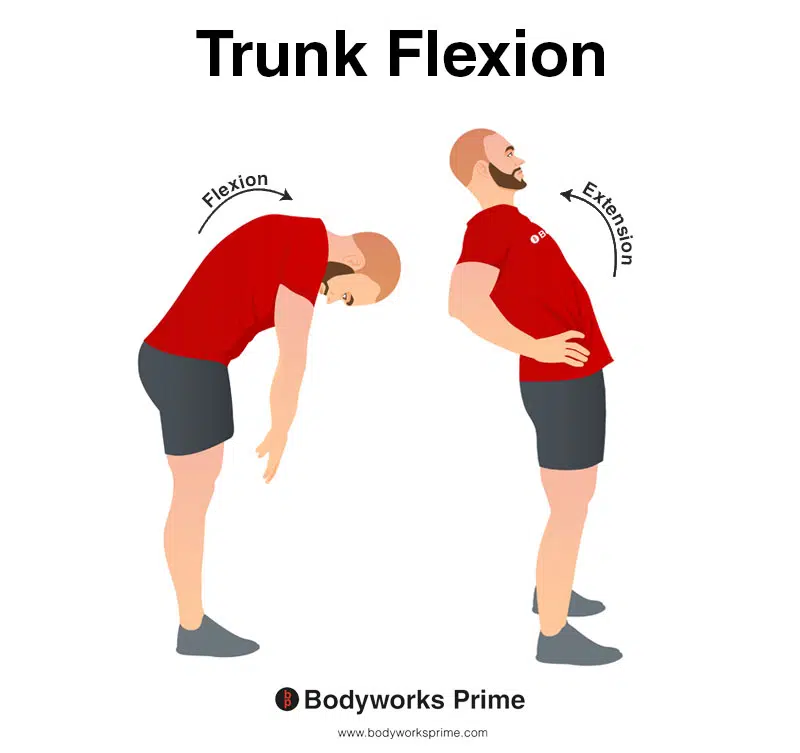
This image shows an example of trunk flexion, which involves bending the torso forwards. The opposite of trunk flexion is trunk extension. The psoas minor is able to assist with flexion of the trunk by providing weak flexion, specifically in the lumbar region.
Innervation
The psoas minor is innervated by the anterior ramus of first lumbar nerve (L1) [11].
Blood Supply
Blood is supplied to the psoas minor mainly via the lumbar arteries.
Want some flashcards to help you remember this information? Then click the link below:
Psoas Minor Flashcards
Support Bodyworks Prime
Running a website and YouTube channel can be expensive. Your donation helps support the creation of more content for my website and YouTube channel. All donation proceeds go towards covering expenses only. Every contribution, big or small, makes a difference!
References
| ↑1, ↑5, ↑8 | Bordoni B, Varacallo M. Anatomy, Bony Pelvis and Lower Limb, Iliopsoas Muscle. [Updated 2022 Apr 29]. In: StatPearls [Internet]. Treasure Island (FL): StatPearls Publishing; 2022 Jan-. Available from: https://www.ncbi.nlm.nih.gov/books/NBK531508/ |
|---|---|
| ↑2, ↑6, ↑10, ↑11 | Protas M, Voin V, Wang JM, Iwanaga J, Loukas M, Tubbs RS. A Rare Case of Double-Headed Psoas Minor Muscle with Review of its Known Variants. Cureus. 2017;9(6):e1312. Published 2017 Jun 5. doi:10.7759/cureus.1312 |
| ↑3, ↑4, ↑9 | Dragieva P, Zaharieva M, Kozhuharov Y, Markov K, Stoyanov GS. Psoas Minor Muscle: A Cadaveric Morphometric Study. Cureus. 2018;10(4):e2447. Published 2018 Apr 8. doi:10.7759/cureus.2447 |
| ↑7 | Anatomical study of the psoas minor muscle in human fetuses (article in Spanish-English) Guerra DR, Reis FP, Bastos AdA, et al. http://www.scielo.cl/scielo.php?script=sci_arttext&pid=S0717-95022012000100024&lng=en&nrm=iso&tlng=en Int J Morphol. 2012;30:136–139. |










